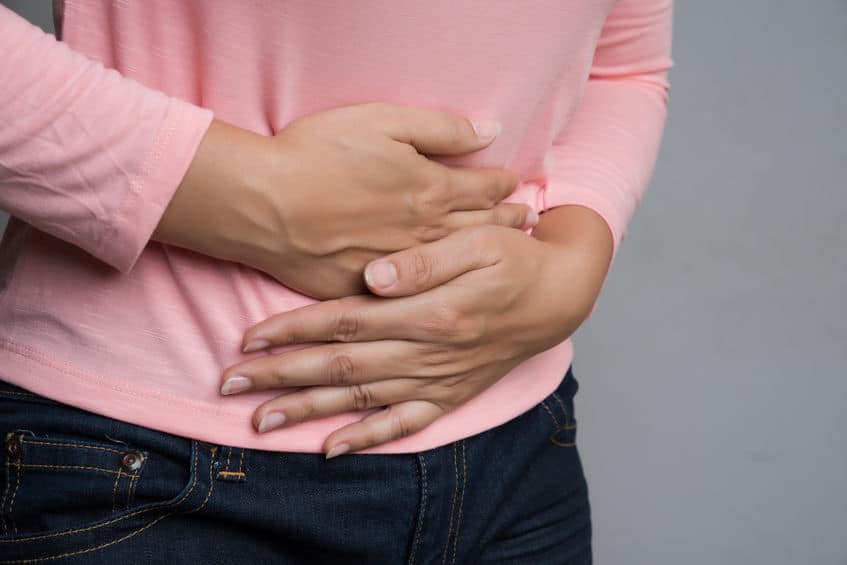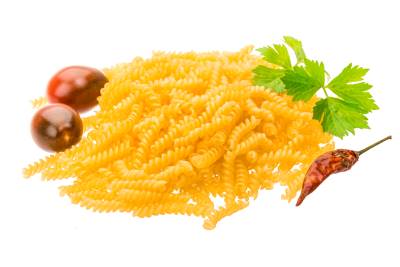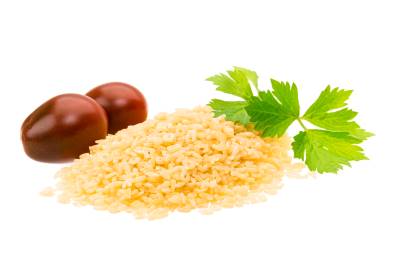Pasta Lovers Rejoice. It does get better. Kind of.

I am now 20 years post gastric bypass and can honestly say I am able to enjoy eating most pasta dishes. I can chow down on a creamy Penne Ala Vodka without issue. However, take two bites of anything made with angel hair pasta, and there’s a lump in my stomach that’s not going anywhere, any time soon.
Why is that, you may ask? Well here’s what I’ve learned. The shape of the pasta will determine whether I can tolerate it or not.
This post may contain product links. As an Amazon affiliate, I earn a small commission from qualified purchases. Thanks for your support!
Pasta and Digestion
We all know pasta comes in many different shapes and sizes. There’s long, as in spaghetti, stuffed, as in ravioli, and shaped, as in rigatoni. You get the picture. When cooked correctly, all pasta tastes the same. Because of the different textures, we may perceive it differently, based on how it feels in our mouth, but the taste, it’s the same.
Now how it feels in the belly, that’s a different matter. Like bread and rice, pasta is sticky, and can easily fill up a small pouch very quickly. Overcooked pasta is extra difficult to digest especially if not chewed well. As we know, chewing everything well is important for people that have had gastric bypasses. But for me, no amount of chewing is changing the fact that I can’t eat spaghetti.
Some Biological Info
In a post by Phoenix Health, they state:
Because of the starchy nature of bread, rice, and pasta, after your surgery, they can form a paste in your throat that is hard to swallow without liquid. In some cases, they can block the stoma, the hole to the pouch that is your new stomach. You don’t have to completely reject these high-starch foods, but it’s best to avoid them in the beginning. When you do eat them, try to have very small portions and make sure that you only eat small bites of each.
Ask anyone who had a gastric bypass, we all learned that lesson pretty quickly.

I also found this post by Adelaide J Cole pretty interesting.
The digestion of pasta starts with the mechanical breakdown of the pasta noodles in the mouth, where teeth grind up the pasta to increase its surface area so it can be chemically broken down. In the oral cavity, a form of chemical digestion occurs as well. The saliva in the mouth covers the pasta for two reasons: to coat the pasta with enzymes (salivary amylases) that start to disintegrate the pasta’s carbohydrates and to give the masticated pasta a slippery covering for it to slide down the 10-inch esophagus into the stomach. The stomach is the last site of mechanical digestion, but it also is the first site of protein digestion. The seven grams of protein that are in one serving of pasta are chemically broken down as a result of the gastric acid in the stomach. The amylases from the saliva stop digesting the carbohydrates once they reach the acidic stomach since acid prevents enzymes from working. The now partly-digested pasta combines with gastric juices and moves through the pyloric sphincter and into the duodenum, the first part of the small intestines, where most of the chemical digestion of carbohydrates and lipids occurs.
What I got out of all that technical medical jargon is that, if gastric bypass recipients don’t chew pasta until it’s ground up into tiny bits, it’s going to be an issue. Most of the mechanical digestion the article describes does not happen the same way or to the same degree for us.
How Shape Can Make A Difference
Why does the pasta shape make a difference? I still haven’t been able to find the elusive answer to that question. At least not to my satisfaction. Most of what you are about to read are conclusions that I’ve come to on my own. I’m going by what I have learned through trial and error, over the course of 20 years.
I have scoured the internet to discover how pasta shape affects digestion. All I ever find is information like I gave above. Pasta is sticky. It becomes a mushy ball. It blocks the stoma. Ok, great. We get it. But why is it then, that some pasta shapes cause me no problem at all and other shapes make me regret my choice instantly? I didn’t find anything on that. But I know the shape of the pasta affects how I digest it because I’ve lived with it for the past 20 years.
A Look At The Different Shapes.
I know there are many more shapes than I am going to mention, but these are the ones I am most familiar with and that I have cooked and eaten.
Of the long pasta, there are only two shapes I am able to tolerate. Lasagna and Fusilli. The others become a ball of starchy mush in my stomach. I find my issue with these kinds of pasta is they are meant to be swirled on the fork and eaten in a dense pasta-packed bite. No one ever eats one piece of spaghetti at a time. Therefore in order to have a satisfactory bite, a portion that is too large to chew thoroughly before swallowing is usually eaten. Add to that, the sauce, and the chewing process make it slippery. When you combine those two things, the answer is clear. Too much, poorly chewed, pasta is ingested at once.

Long Pasta: Spaghetti, Linguini, Angel Hair, Capellini, Fusilli, Lasagna, Pappardelle, Tagliatelle, Vermicelli etc.
I can’t eat a lot of long fusilli but I do tolerate it better than any of the other long skinny shapes and I believe it is because the curl to the noodle requires more chewing before swallowing and when you wrap it around your fork the curls take up room, so you take less pasta.
Why I can eat lasagna is the easiest to understand. Lasagna, when cooked traditionally, is layered with other ingredients. Depending on the recipe there is usually a greater ratio of other food to pasta. You are consuming way more meat, cheese, or veggies than pasta.

Short Pasta: Penne, Rigatoni, Farfalle, Orecchiette, Elbows, Cavatappi, Fiori, Gamelli, Radiatori, Rotini
I tolerate all the pasta in this section fairly well. It’s easy to put one or two pieces of these pasta shapes on the fork. Because of the larger size of the individual pieces but the smaller quantity in the mouth, it’s easier the chew thoroughly and slowly. By the time this pasta hits the stomach, it’s much smaller and a good deal of the digestion process has begun.

Mini Pasta: Acini di pepe, Orzo, Ditalini, Tubettini, Pastina, Stelle
This section houses most of my favorite pasta. When I first had my gastric bypass I ate a lot of pastina with milk, butter, parmesan cheese, parsley, salt, and pepper. Being an Italian-American this is something I grew up on. It could be made thin or thick, it never made me ill. I will admit to being concerned that I wouldn’t be able to eat it. If you’ve ever seen pastina in the pot right after the water is drained you’ll understand. It looks like a pot of lumpy paste.
The majority of these pasta shapes are used in soups or other recipes that contain a lot of liquid. The pasta is small enough that no chewing is required in most cases, and it’s small enough to pass through the stoma easily with no problems.
Instant Pasta: Ramen Noodles
I used to love ramen noodles. As a kid growing up, we had them very infrequently. So, when we did it seemed like a treat. Breaking up the block of noodles, waiting just a few minutes for the water to absorb, then slurping the long noodle strand up from the salty broth. It was fun. Not so much fun after a gastric bypass.
Turns out ramen noodles can take up to 32 hours to digest, with up to 7 of those hours in the stomach. Now that’s for someone with an intact digestive system. I have never met a person that has had a gastric bypass and didn’t have a problem with ramen noodles. If there’s one out there, I’d be shocked. To this day, I stay far, far away from ramen.
Choosing The Best Pasta Options
We all know that pasta is filling, but did you know that it is more so for whole wheat pasta? According to an article on EatThis,NotThat.com, That’s because whole wheat has more satiating fiber. White pasta is made with refined white flour and your body digests them quickly. Whole wheat pasta is made with the bran and the germ which provides satiety (desire to stop eating, feeling of fullness). It also provides fiber that feeds gut-friendly bacteria, reduces cholesterol absorption, promotes regularity, and supports overall GI health.
I’ve tried pasta made from white flour, whole wheat, quinoa, mung bean, and, rice. In every case, I could not tolerate the thin shapes. I also found that the latter three went from not done yet, to overcooked. I have yet to manage cooking them to a texture I enjoy. I stick with whole wheat or white flour pasta now. I also eat pasta in moderation and only eat shapes I know I tolerate.
Update: I did recently try protein pasta and found it to cook and taste like regular white flour pasta.
Pasta Toppings
It’s rare now that I make pasta with just tomato sauce. If I’m making tomato sauce, I always make meat sauce. The addition of ground beef and sometimes ground pork, thicken the sauce. Throw in some meatballs and you have more of a hearty meal. I like to use “add-ins” when making pasta. I find when I add other ingredients, such as meats or vegetables, to a pasta dish, I still get the pleasure of eating pasta but I don’t overdo it.
If you’d like to try my two favorite pasta dishes, which I make on a regular basis, click on them, ” Chicken with artichoke hearts and capers”, and “Sausage, Peppers, and Onions Pasta”. I’m not very original when it comes to naming dishes. I hope you try them and enjoy them. Mangia!
Recipes coming soon.
What I’ve Learned
The initial question was: Why are some Pasta shapes easy to tolerate, while others are not?
Thin pasta becomes a mushy mess and overstuffs the pouch and blocks the stoma. Who saw that coming?
The short pasta is eaten a few pieces at a time and chewed thoroughly.
The mini pasta is small enough and usually has enough broth or liquid to pass through easily
Instant pasta will stay in the pouch undigested for hours. Stay clear of it.
While researching this post, I came across this article from U.S.News called You’re Eating Pasta Wrong This Nutrition Pro Says. I found it interesting. Maybe you will too.
